Fraises en carbure sont les héros méconnus de l'usinage de précision, coupant le métal comme un couteau chaud dans du beurre. Si vous vous êtes déjà émerveillé devant les détails complexes de la métallurgie, il y a de fortes chances que les fraises en carbure aient joué un rôle de premier plan. Mais qu'est-ce qui les rend si exceptionnelles ? Plongeons dans les détails des fraises en carbure, de leur composition et de leurs types aux applications, en passant par les processus de production, etc. Ce guide vous permettra non seulement de vous informer, mais aussi de faire de meilleurs choix lors de la sélection de ces outils incroyables.
Qu'est-ce qu'une fraise en carbure ?
Les fraises en carbure sont des outils de coupe utilisés principalement dans l'usinage CNC (Computer Numerical Control). Elles sont composées de carbure de tungstène - un composé connu pour sa durabilité et sa résistance à la chaleur - souvent associé à du cobalt ou à d'autres métaux pour améliorer les performances. On peut les comparer au scalpel du monde de l'usinage : ils sont précis, tranchants et indispensables.
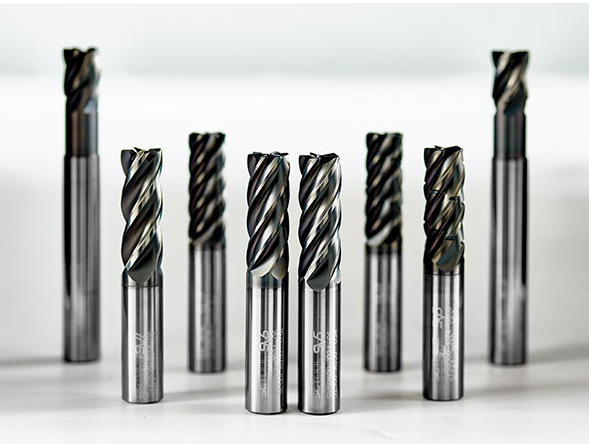
Types de fraises en carbure
Voici un tableau récapitulatif des principaux types de fraises en carbure et de leurs utilisations particulières :
| Type de fraise en carbure | Description | Principaux cas d'utilisation |
|---|---|---|
| Fraises à bouts carrés | Extrémités plates pour les angles vifs dans les coupes. | Rainurage, coupe en plongée et profilage. |
| Fraises à bouts ronds | Extrémités arrondies pour des courbes et des contours lisses. | Usinage de contours en 3D, fabrication de moules et de matrices. |
| Fraises à rayon d'angle | Semblables aux fraises à bouts carrés, mais avec des coins arrondis. | Amélioration de la durabilité lors de l'usinage des arêtes. |
| Fraises d'ébauche | Arêtes de coupe dentelées pour un enlèvement de matière plus rapide. | Usinage intensif, grands volumes d'enlèvement de matière. |
| Fraises de finition | Arêtes de coupe lisses pour des finitions de surface raffinées. | Dernières passes pour obtenir des surfaces de haute qualité. |
| Fraises coniques | Formes coniques pour les coupes profondes et les détails complexes. | Usinage de moules et de cavités profondes. |
| Moulins à fil | Spécialisé dans la coupe de filets intérieurs. | Filetage de précision dans les matériaux durs. |
| Fraises à simple cannelure | Une seule arête de coupe pour un dégagement maximal des copeaux. | Matériaux souples comme le plastique et l'aluminium. |
| Fraises à plusieurs tranchants | Plusieurs arêtes de coupe pour des finitions plus lisses. | Matériaux plus durs nécessitant des coupes de précision. |
| Fraises en bout revêtues | Fraises revêtues de matériaux tels que TiAlN ou DLC pour une durabilité accrue. | Usinage à grande vitesse avec amélioration de la durée de vie de l'outil. |
Analyse des matières premières et de la composition de Fraises en carbure
Les fraises en carbure sont principalement fabriquées à partir de poudre de carbure de tungstène, un matériau qui allie ténacité et résistance à la chaleur. Voici ce qu'elles contiennent généralement :
- Poudre de carbure de tungstène: Forme la structure primaire, offrant dureté et résistance à l'usure.
- Cobalt: Agit comme un liant, améliorant la résistance.
- Carbure de titane: Améliore la résistance thermique.
- Tantale ou Niobium: Augmente la résistance à des températures élevées.
Ce mélange unique permet aux fraises en carbure d'être plus performantes que les outils en acier rapide (HSS), en particulier dans les environnements exigeants.
Applications des fraises en carbure
| L'industrie | Applications spécifiques |
|---|---|
| Aérospatiale | Découpe d'alliages de titane pour des composants à la fois légers et résistants. |
| Automobile | Fabrication de pièces de moteur et d'engrenages de précision. |
| Médical | Usinage d'outils chirurgicaux et de prothèses. |
| Électronique | Découpe de minuscules composants pour semi-conducteurs et cartes de circuits imprimés. |
| Fabrication de moules et de matrices | Fabrication de moules et de matrices complexes pour le moulage du plastique et du métal. |
| Pétrole et gaz | Fabrication de composants pour les environnements difficiles et à haute pression. |
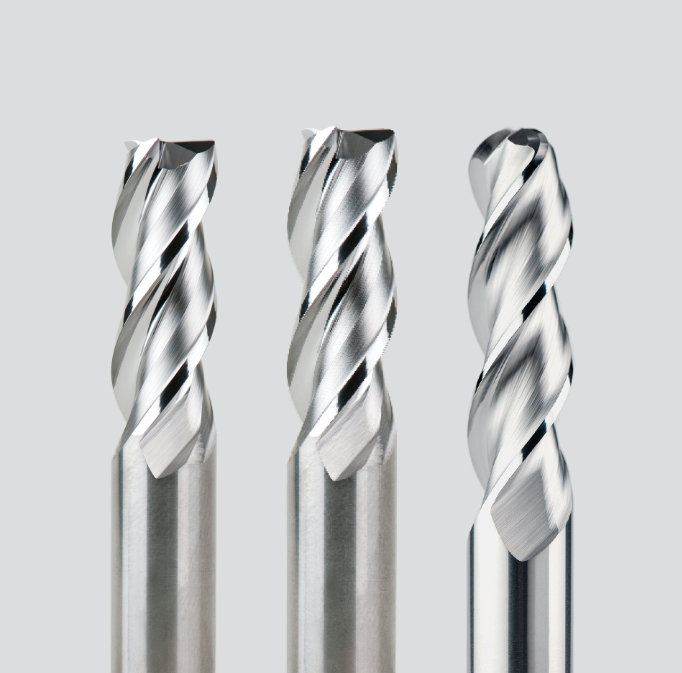
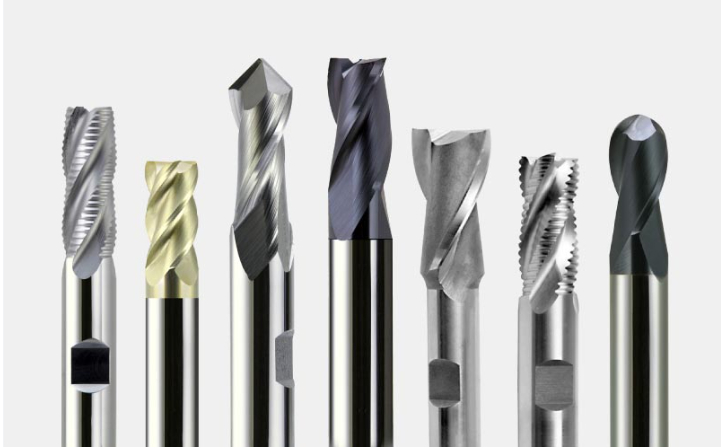
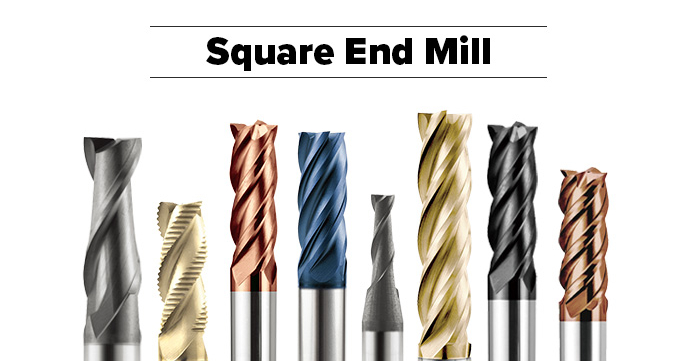
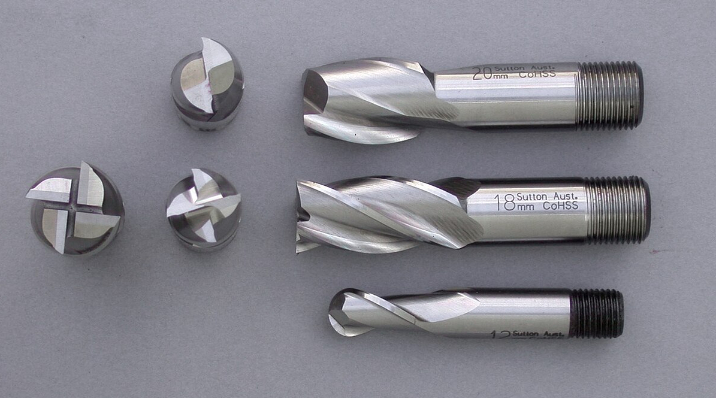

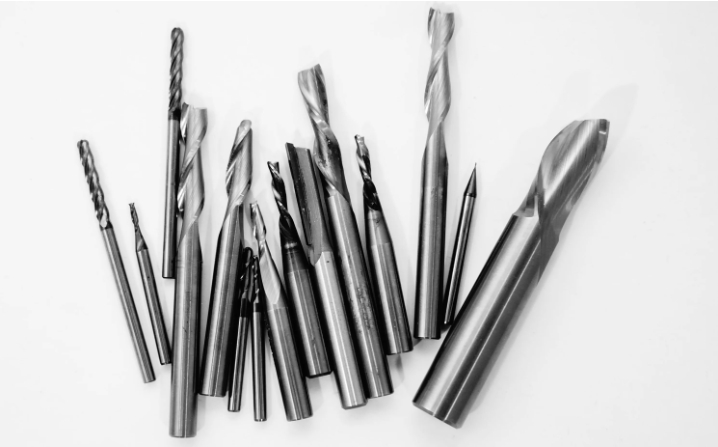
Déroulement du processus de production Fraises en carbure
La fabrication des fraises en carbure comporte plusieurs étapes méticuleuses :
- Mélange de poudres: Le carbure de tungstène et d'autres éléments sont mélangés.
- Le compactage: Le mélange est compressé dans les formes souhaitées.
- Frittage: Le traitement à haute température permet de fusionner les matériaux.
- Découpage et façonnage: Les ébauches brutes sont broyées pour obtenir des formes précises.
- Revêtement (en option) : Des revêtements spécialisés sont appliqués pour améliorer les performances.
Propriétés des matériaux des fraises en carbure
| Propriété | Description |
|---|---|
| Dureté | Extrêmement dur, il garantit une longue durée de vie de l'outil, même en cas de fortes contraintes. |
| Résistance thermique | Résiste aux températures élevées lors des processus d'usinage intensifs. |
| Résistance à l'usure | Offre une durabilité exceptionnelle, réduisant l'usure. |
| La force | Résistance élevée à la compression pour la coupe de matériaux résistants comme l'acier et le titane. |
Composition, propriétés et caractéristiques
| Composant | Rôle | Caractéristiques |
|---|---|---|
| Carbure de tungstène | Ingrédient principal | Dureté, résistance à l'usure. |
| Liant en cobalt | Amélioration de la résistance | Améliore la résilience et réduit la fragilité. |
| Additifs de titane | Renforcement de la stabilité thermique | Permet un usinage à plus grande vitesse. |
Dureté, solidité et résistance à l'usure
| Métrique | Valeur | Importance |
|---|---|---|
| Dureté (HRC) | 89-93 | Maintient les bords tranchants sous contrainte. |
| Résistance à la compression | 3000 MPa | Supporte les charges lourdes sans déformation. |
| Résistance à l'usure | Haut | Prolonge la durée de vie opérationnelle, réduisant ainsi les besoins de remplacement. |
Spécifications, tailles, formes et normes
| Spécifications | Gamme disponible | Remarques |
|---|---|---|
| Diamètre | 0,1 mm à 20 mm | Convient aussi bien pour les détails fins que pour l'usinage lourd. |
| Longueur | 20 mm à 150 mm | Varie en fonction des exigences de profondeur. |
| Type de tige | Droit, conique | Assurer la compatibilité avec les différentes configurations de machines. |
| Compte de flûte | 1 à 12 | Ajusté en fonction des exigences en matière de matériaux et de finition. |
Sélection des fraises en carbure appropriées
| Critères | Considérations |
|---|---|
| Matériau à découper | Adapter la dureté de la fraise au matériau. |
| Type de revêtement | TiAlN pour la chaleur, DLC pour la lubrification. |
| Conception de la flûte | Simple cannelure pour les plastiques ; multi-cannelure pour l'acier. |
| Vitesse de coupe | Les vitesses plus élevées nécessitent des outils revêtus. |
| Budget | Équilibrer le coût et la performance. |
Avantages et limites de la Fraises en carbure
| Avantages | Limites |
|---|---|
| Durabilité exceptionnelle | Coût initial plus élevé que celui des outils en acier rapide. |
| Résistance à la chaleur et à l'usure | Cassant en cas d'utilisation inappropriée. |
| Polyvalent pour diverses applications | Nécessite un équipement spécifique pour l'affûtage. |

Fournisseurs et détails des prix
| Fournisseur | Fourchette de prix | Caractéristiques principales |
|---|---|---|
| Kennametal | $50 – $300 | Revêtements de haute qualité, gamme variée. |
| Outils Seco | $60 – $400 | Spécialisé dans l'aérospatiale et l'automobile. |
| Sandvik | $70 – $350 | Des performances exceptionnelles dans l'usinage à grande vitesse. |
FAQ
| Question | Réponse |
|---|---|
| Pourquoi choisir le carbure plutôt que les outils en acier rapide ? | Les outils en carbure durent plus longtemps, supportent des vitesses plus élevées et sont plus résistants à l'usure. |
| Puis-je utiliser des fraises en carbure sur du bois ? | Oui, mais c'est exagéré ; les outils HSS conviennent parfaitement pour le bois. |
| Quels sont les meilleurs revêtements pour les hautes températures ? | TiAlN et AlCrN sont excellents pour les applications à forte intensité de chaleur. |
| Les fraises revêtues en valent-elles la peine ? | Absolument, en particulier pour l'usinage à grande vitesse ou l'usinage de matériaux abrasifs. |




